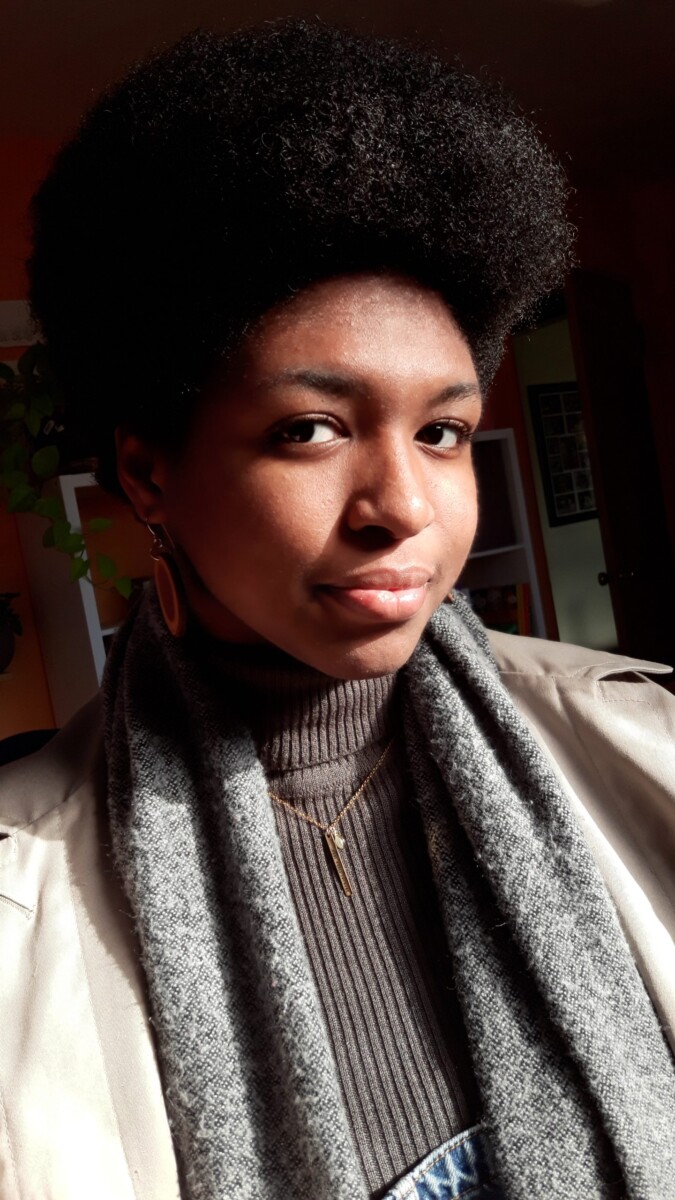It was day one of a brand-new job, and a new bus route. My bus driver complimented my afro, and next time he saw me on his route, gave me a book. It was an autobiography, with a woman sporting an afro like mine. When we arrived at Central Station, he was kind enough to ask the other driver to make sure I got to work safely. Every time I walk into work, at Heartside Ministry, people greet me as “Angela Davis”, pointing to my afro.
I remember being a kid and wondering what you had to do to be cool enough to be greeted when you walk into a room. I envied the seemingly fabricated camaraderie between people who barely knew each other. I used to wonder, what do you have to do to feel community?
Now as an adult, walking out of a connection-starved year of lockdown, Covid-precautions, and isolation, I ask,
Who designs & creates community?
Why do I ask?
I’m an artist. I craft things; therefore I spend a lot of time observing the craft of others. My inner designer tries to trace back the creative processes and shifting circumstances that led to the aesthetics of buildings downtown, the interactions between people groups. I’m curious about what other creatives have made.
I also love a good story – filled my childhood with fantasy books. A good story makes a reason “why” stick. And I think we all know that feeling that you’re holding something precious and fragile when someone tells you their story. Regardless of whether a story is told artfully, when someone shares their unique story with you, it reaffirms their humanity. It’s messy and precious and fragile. It’s a gift.
I love people watching in the city. Cities are touched deeply by overlapping & interlocking remnants of fully-lived lives. It’s hard not to be brimming with curiosity.
So I ask, who designed my community? It’s a lifelong question, but I think it’s worth asking. I’m digging into why it’s worthwhile, not just for me, but other creatives, who may be making/contributing to communities of their own.
Community Matters.
I remember a class trip to Northern Ireland, exploring the city of Belfast. It seemed as if the city had tensed up during the Troubles and had yet to unwind its muscles. Chicken wire and barbed fence decorated on brick walls. Pointed gates stood guard in front of public buildings. Defiant murals splashed color upon worn bricks. What would this city feel like if it was mine? If I carried the stories, memories, & histories of family and friends who lived an abundantly chaotic, violent life in these streets?
Community can reaffirm or diminish our cultural & personal identities. But how much of that do we do on purpose, and how much of it simply sinks into us?
Did We Design it On Purpose?
I think there’s two ways community forms – intentionally and naturally. These intersect beautifully. Designers, architects, creatives, or businesses will actively create spaces. From there, these spaces naturally take on their own life.
Perhaps a space was intentional once, but now it holds a new presence. Like the children’s playground a block from my house that became the evening hangout for after school basketball rivalries. By extension, it morphed into a dense social hub for drama that would normally be ‘insubordination’ in school hallways.
People naturally form community daily. We tell ourselves stories about our communities and internalize them. We respond to events that shape our landscapes. For example, the Windows GR project. A protest in the summer of 2020 left many downtown Grand Rapids’ businesses smashed in. But an artist collective transformed the storefronts into an affirming place where the artistry and passion of the community came to the forefront.
3 Ways to Move Forward
These designed communities are made more intricate by the events, stories, and people who ebb and flow through community spaces. So after I ask “who designs my community?” what next? What does the story of a place equip me to do? This question encourages me to:
1. Think twice. To question harmful narratives at the beginning. Our stories inform the design of each community. Learning them helps me think twice before I blithely settle into narratives that condone apathy.
2. Listen better. Asking who designed this place before us can help us answer the question How are we going to design this place now? For designers, creatives, artists – anyone embarking on the path to make something new – listening is often step one.
3. Practice better physical & emotional hospitality. In her book, Making Room, Christine D. Pohl writes that a hospitable place “does not violate the stranger’s identity and integrity.” Listening to stories and context equips us to do that well.
So, who does it? Who designs your community? I approach this as a creative person who hopes to do meaningful work, and a curious designer who loves celebrating the work of others. This question calls me to dwell in the intersection of purpose, faith, and creativity.
Streetscene Photo by Chris Dickens on Unsplash


